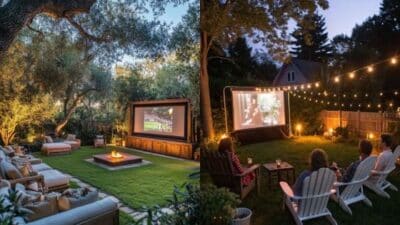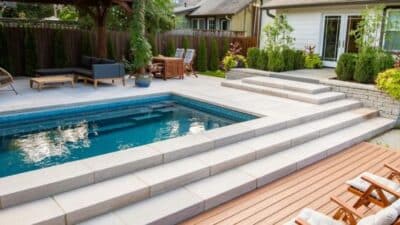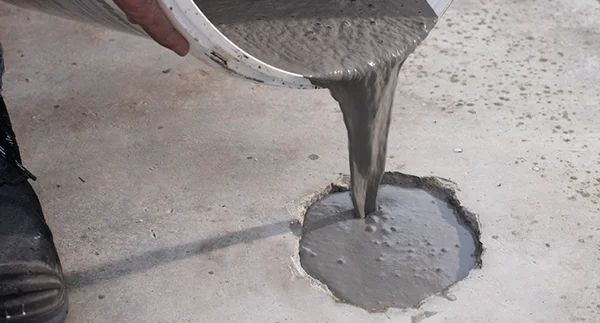
Key Takeaways
- Concrete resurfacing provides a durable and customizable solution for updating existing surfaces, opening possibilities for both subtle refreshes and bold transformations.
- Techniques such as staining, stamping, and overlays can mimic high-end materials at a fraction of the cost, enabling the creation of luxury-inspired environments on a budget.
- Incorporating decorative elements enhances both the aesthetic appeal and functionality of spaces, addressing a wide array of design goals from safety to visual impact.
Table of Contents
- Stained Concrete for a Custom Look
- Stamped Concrete Patterns
- Concrete Overlays: Renew Without Replacing
- Spray-On Concrete Textures
- Incorporating Decorative Elements
- Maintenance Tips for Resurfaced Concrete
Concrete resurfacing is redefining the possibilities for homeowners and designers seeking a fresh, contemporary upgrade. The desire for modern, sleek aesthetics has driven countless renovation projects in both residential and commercial settings. With advances in finishing methods and design creativity, concrete—which was once simply regarded as utilitarian—has transformed into a coveted element of architectural style. Whether revitalizing outdoor patios battered by sun and rain, transforming interior floors into gallery-worthy surfaces, or refreshing garage spaces, today’s resurfacing options offer a stylish, durable solution that can be tailored to virtually any vision or functional need. Techniques are available for every use case, from artistic statement pieces in trendy loft apartments to concrete epoxy garage floors that combine utility and elegance, making concrete resurfacing a top choice for those who want their spaces to feel as modern as they are functional. For more information on innovative concrete resurfacing solutions, visit https://permacoconcretecoatings.com/.

With its ability to mimic high-end materials and adapt to diverse design preferences, resurfacing brings both form and function to the forefront. Innovative textures, bold or subtle colors, and an expanding array of decorative techniques can give new life to tired concrete, meeting both aesthetic and everyday demands. This high degree of customizability lets property owners create a look that’s uniquely theirs. Homeowners are increasingly turning to creative approaches that combine beauty with practical performance, such as integrating slip-resistant finishes in kitchens or designing seamless indoor-outdoor transitions. Even busy family homes can reap the benefits of resilient surfaces that resemble polished stone or aged wood.
Another reason for the growing popularity of creative concrete resurfacing is its environmentally conscious appeal; rejuvenating rather than replacing surfaces maximizes resources and minimizes waste. This green approach reduces the demand for raw materials and helps prevent construction debris from being sent to landfills. In today’s market, it’s more important than ever to balance sustainability, design trends, and day-to-day usability when reimagining living and outdoor environments. Many resurfacing compounds are developed with eco-friendly formulations that further reduce their carbon footprint, appealing to eco-minded homeowners who seek to minimize their environmental impact without compromising on style.
For spaces that require accessible upgrades, there’s also an emphasis on compliance and inclusivity, including solutions to ensure all pathways and entry points meet modern standards. Designing for accessibility is not only a matter of compliance but also one of hospitality and care, ensuring that all residents and guests can easily navigate a property. By integrating smart design with high-performance finishes, it’s possible to achieve spaces that are as thoughtful as they are beautiful.
Stained Concrete for a Custom Look

Concrete staining transforms plain, gray slabs into visually stunning surfaces by infusing them with vivid color and character. Acid stains react with minerals present in the concrete to achieve variegated, marbled effects that echo the look of natural stone. Alternatively, water-based stains offer an even broader color palette and increased control over the final hue, allowing for a seamless alignment with any design vision. For accessible environments, ADA concrete ramp solutions can be integrated alongside stained surfaces to ensure safe and easy access for all users. This transformation moves ordinary surfaces into the realm of luxury, infusing spaces with richness and depth. Stained concrete is especially popular for accent floors in open-concept living spaces and eye-catching outdoor patios, where the durability of concrete can complement the sensibilities of high-end interior and exterior design. This technique doesn’t just add immediate elegance to surfaces; it creates a finish that is both fade-resistant and easy to clean, ideal for high-traffic areas like kitchens, entryways, and busy foyers. Homeowners appreciate how stained surfaces resist the buildup of dust and allergens, contributing to a cleaner indoor environment. In addition, stained surfaces can be sealed for extra durability, making them a smart low-maintenance choice that holds up for years even under challenging conditions. Architectural Digest showcases the artistic versatility of concrete staining for modern homes, featuring examples that range from subtle earth tones to dramatic, jewel-like color washes.
Stamped Concrete Patterns
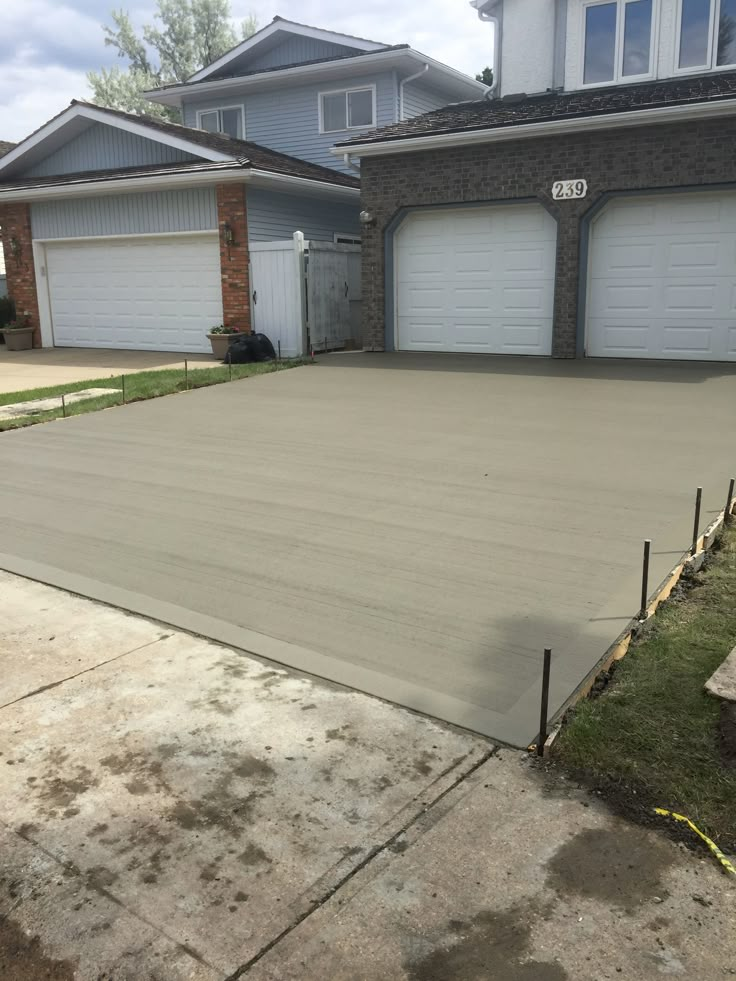
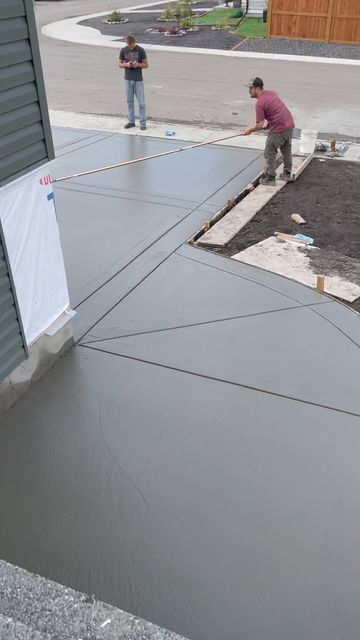
Stamped concrete delivers the luxurious look of natural stone, tile, or even wood planks—without the high installation costs or the need for frequent upkeep. Artists and tradespeople use specialized tools to press patterns into the surface of freshly poured or resurfaced concrete, transforming an otherwise ordinary material into a beautifully intricate one. This process allows for limitless design flexibility, combining creative vision with enduring strength. Homeowners can select realistic repetitions of flagstone, herringbone brick, or intricate geometric motifs tailored to the surrounding architecture, blurring the boundaries between practicality and art.
Stamped concrete is particularly effective for large areas, such as driveways, pool decks, and walkways, where cohesive, decorative surfaces make a significant visual impact. Not only is it resistant to heavy traffic and weather extremes, but the continuous design also limits weed growth and minimizes maintenance compared to traditional pavers. Since stamped concrete requires fewer joint lines than individual stones or bricks, there’s less risk of shifting, settling, or weed incursion, delivering a consistently tidy appearance for years to come.
Concrete Overlays: Renew Without Replacing


Concrete overlays are a game-changer for aging or damaged slabs that are structurally sound beneath the surface. By applying a thin layer of specially formulated concrete mixture, skilled installers can achieve the appearance of a brand-new slab—at a fraction of the replacement cost. Overlays can be colored, textured, or stamped to match virtually any material, adapting seamlessly to both indoor and outdoor projects. This flexibility is especially valuable in renovations where preserving the substructure can save significant time and money.
This approach not only improves the visual impact but also strengthens the underlying structure, extending the lifespan of the space for years. Overlays withstand the demands of pool decks, entryways, and garages, further preventing cracking and spalling. The latest technologies have made overlays more resilient to temperature swings and intense use, meaning they require less frequent attention than traditional finishes. For inspiration, Better Homes & Gardens offers unique project examples that illustrate how overlays transform tired patios and walkways, inspiring homeowners to experiment with design in ways they may not have considered before.
Spray-On Concrete Textures
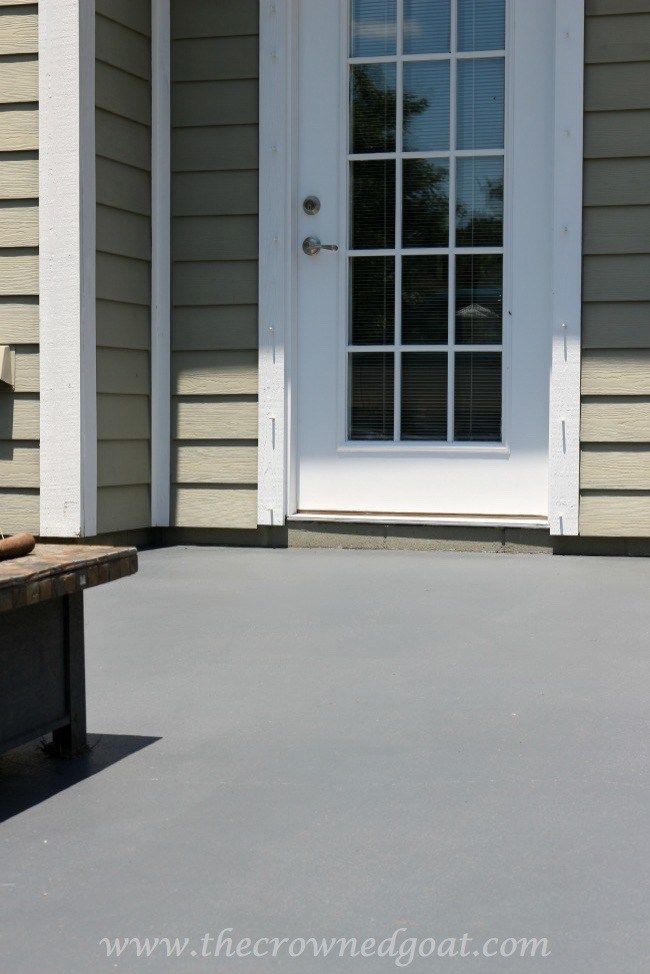
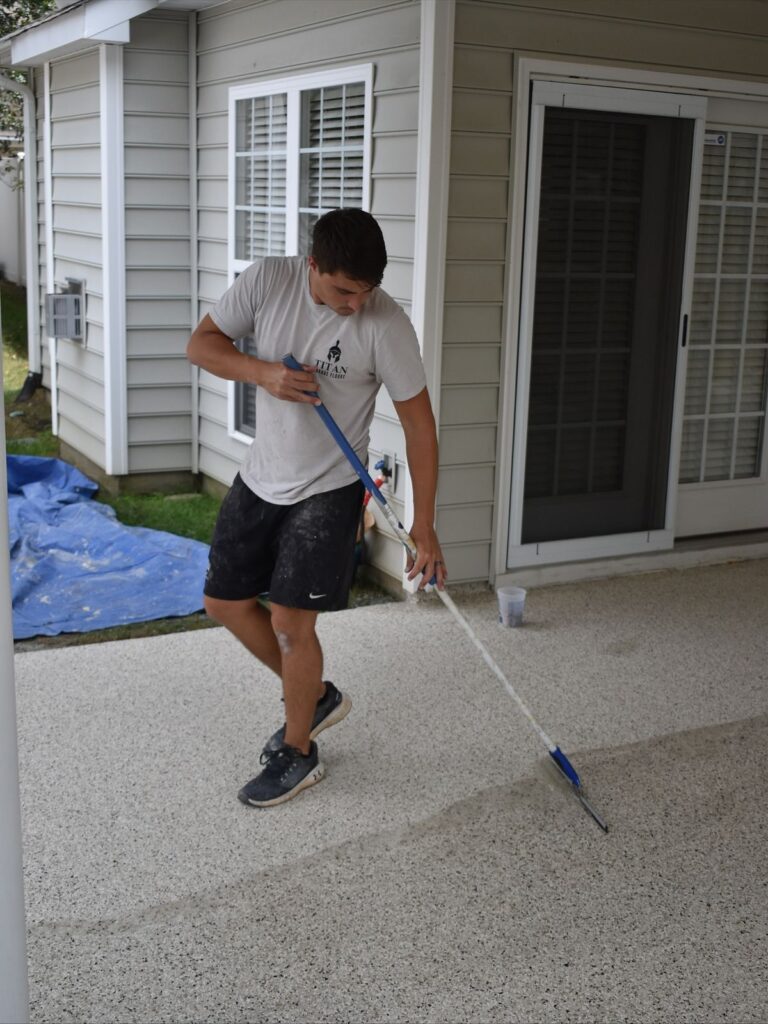
Spray-on concrete textures have revolutionized exterior surface design, bringing practical benefits and creative flair. The process involves applying a polymer-modified concrete mixture with a specialized spray gun, creating a lightly textured, slip-resistant finish that dramatically improves safety around pools, garden paths, and stairs. The result is not only visually engaging but also practical, offering a durable surface that remains comfortable underfoot—even on hot summer days or in humid climates where slick spots can be hazardous.
Besides enhancing safety, spray-on resurfacing allows for custom patterns, multi-tone color schemes, and built-in border designs. Installers can use stencils, masking tape, or freehand techniques to introduce creative shapes and highlights, making it an ideal solution for homeowners who want a distinctive look. Its flexibility opens the door to unique combinations that reflect personal style, adding character and curb appeal to contemporary or mid-century outdoor spaces. The quick installation process and low maintenance requirements make spray textures a popular choice for busy, active homes where appearance, safety, and convenience are equally important.
Incorporating Decorative Elements
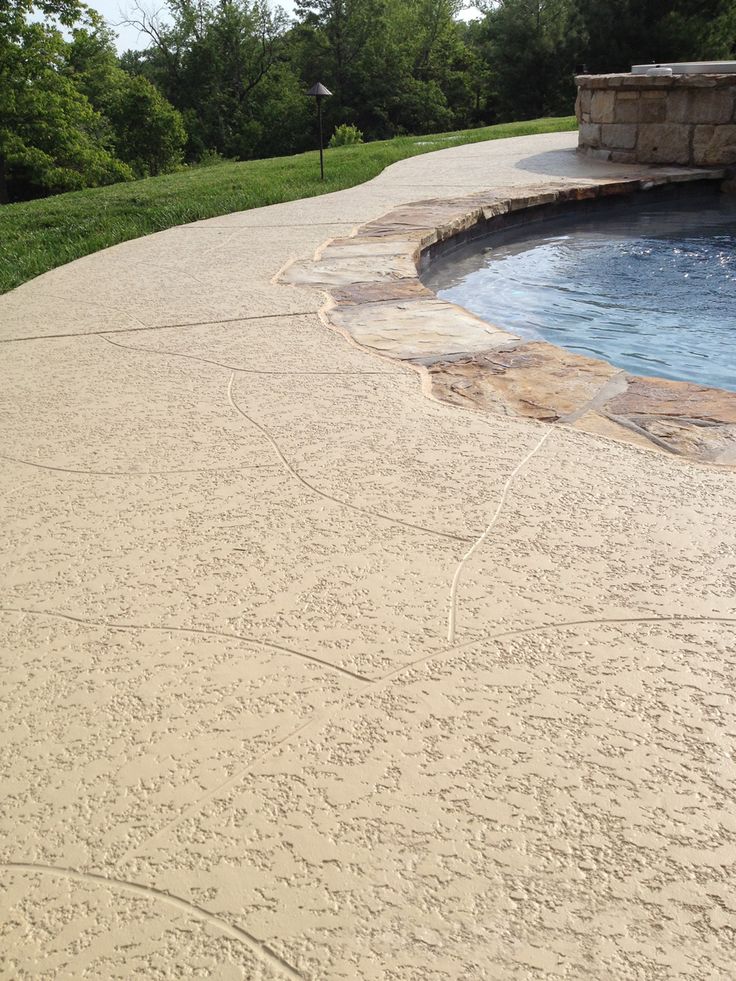
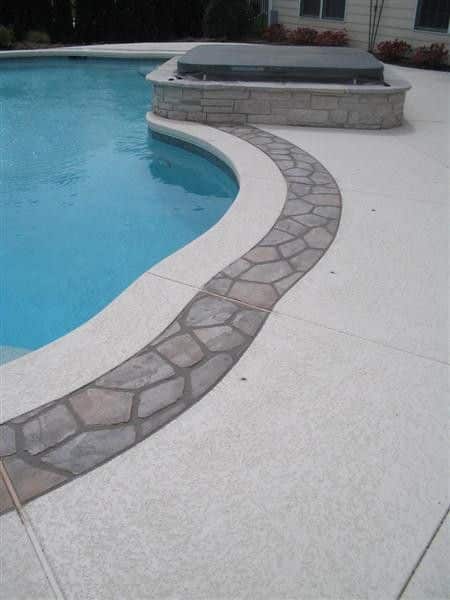
Concrete resurfacing is more than a technical refresh—it’s an opportunity to inject artistry into any environment. Adding decorative borders, inlaid tiles, or stenciled motifs gives patios, walkways, and courtyards a signature look. These creative touches can help a surface stand out and become a central feature of the landscape design. Borders can define the perimeter or create geometric patterns that guide the eye, while stencils allow homeowners to recreate the look of costlier inlaid mosaics or custom medallions. To maintain the beauty and functionality of these surfaces over time, expert tub drain cleaning naturally is recommended to prevent clogs and keep everything flowing smoothly. Mixing colors and textures within a single area introduces contrast and visual interest, breaking up large expanses of concrete. These enhancements serve not just as visual accents, but also as thoughtful design features that guide foot traffic or mark separate activity zones within open spaces. With the integration of lighting, planters, or embedded hardware, decorative concrete can become an interactive backdrop for everyday living or entertaining.
Maintenance Tips for Resurfaced Concrete
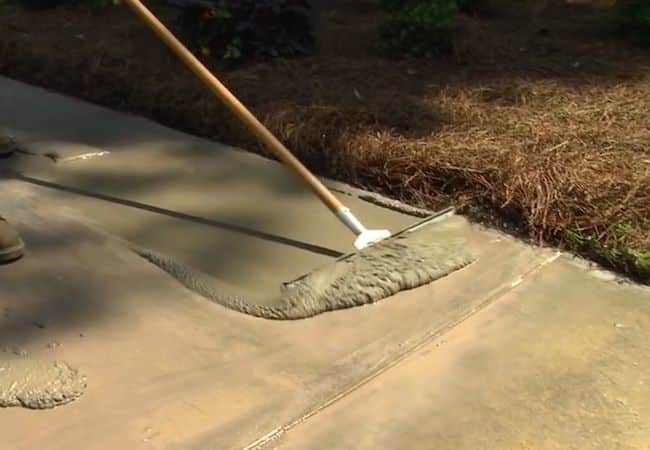
Protecting your investment starts with routine care and seasonal attention. To keep resurfaced concrete performing at its best, consistency is key, and a few proactive steps can extend the life and appearance of the surface:
- Remove surface debris and dirt regularly using a broom or leaf blower to prevent scratches and grime accumulation.
- Clean spills promptly to prevent staining, especially in high-traffic or food preparation areas where oils or acids can penetrate if left unattended.
- Apply a penetrating sealer every two to three years to maintain color, repel moisture, and prevent weathering, particularly on exterior installations.
- Inspect the area occasionally for minor cracks or chips, and repair them promptly to prevent long-term damage or water infiltration beneath the surface.
In regions with freeze-thaw cycles or exposure to de-icing salts, it’s essential to select a sealer specifically formulated for resistance to these conditions, providing ongoing protection. With a thoughtful maintenance plan, your resurfaced concrete will retain its beauty and resilience for many years, allowing you to enjoy the benefits of a premium upgrade without major intervention.
Creative concrete resurfacing unlocks stunning possibilities for modern spaces, offering solutions that blend artful design with lasting strength. From customized color treatments and advanced texturing methods to innovative overlays and accessible upgrades, today’s options reflect a commitment to style, functionality, and inclusivity. With thoughtful planning and expert installation, nearly any concrete surface can be renewed into a striking, practical, and sustainable element of the contemporary home.
- 0shares
- Facebook0
- Pinterest0
- Twitter0

